Driven cast in-situ concrete piles are constructed by driving a closed-ended hollow steel or concrete casing into the ground and then filling it with concrete. The casing may be left in position to form part of the pile, or withdrawn for reuse as the concrete is placed. The details of driven cast in-situ piles are shown in figure below.
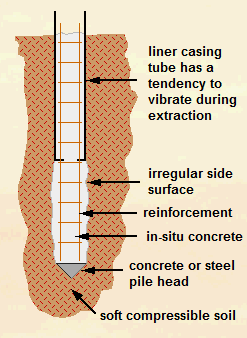 |
| Add caption |
Fig.: Driven f In-Situ Concrete Piles Details
The concrete is then rammed into position by a hammer as the casing is withdrawn ensuring firm contact with the soil and the compaction of concrete. Care must be taken to see that the concrete is not over-rammed or the casing withdrawn too quickly.
There is a danger that as the liner tube is withdrawn it will lift the upper portion of the in-situ concrete, thus leaving a void or necking in the upper portion of the pile. This can be avoided by good quality control of the concrete and slow withdrawal of the casing.
Driven cast in-situ concrete piles can prove to be economic for sand, loose gravels, soft silts and clays, particularly when large numbers of piles are required. For small numbers of piles the on-site costs can prove expensive.
Driven Cast In-Situ Concrete Piles Construction Process
The process of construction of driven cast in-situ concrete piles are shown in figures below:
1. Permanent pile casing first made ready for driving
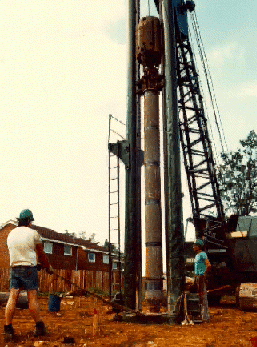
2. Pile casing is then driven into the soil
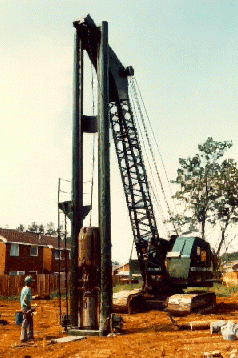
Fig.: Driving of Pile Casing
3. Reinforcement cage is then lowered into the pile core
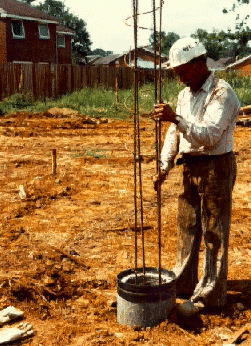
Fig.: Reinforcement Cage placement in pile core
4. Then the concrete is poured in the pile core to complete the construction of driven cast in-situ piles.
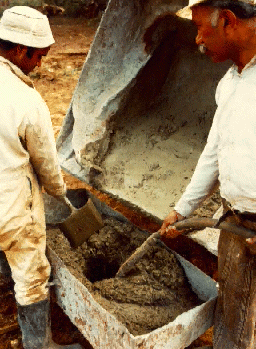
Fig.: Concreting of Driven Cast In-Situ Pile
No comments:
Post a Comment